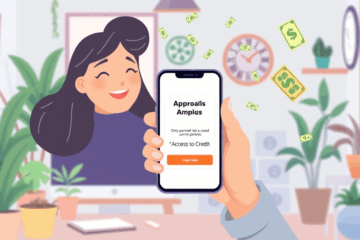Easily Secure A Personal Loan Without Proof of Income
Personal Loan options without proof of income offer a unique solution for individuals facing challenges in traditional employment.
In this article, we will explore how these loans cater to the needs of unemployed and self-employed individuals, considering alternative income sources and leveraging factors like credit scores, collateral, and co-signers.
While these loans may carry higher interest rates, they play a crucial role in providing much-needed financial relief during difficult times.
Understanding the nuances of these loans can empower borrowers to make informed decisions and find the assistance they require.
No‑Income‑Verification Personal Loans: Core Concepts
Personal loans without proof of income are a special type of financing that allows borrowers to obtain funds without submitting traditional earnings documentation like pay stubs or tax returns.
Lenders may still evaluate your credit score, overall financial history, and even request collateral or a co-signer to offset risk.
These loans are often used by individuals with non-traditional earnings or those in transition, such as freelancers, recent graduates, or entrepreneurs.
Some platforms like Upgrade evaluate creditworthiness without requiring stated income, focusing more on your financial reliability.
Lenders offer these loans to expand access to credit for a growing segment of non-W-2 borrowers.
While they usually come with higher interest rates, they can offer vital support during emergencies or business opportunities.
Additionally, services like Universal Credit also provide loans based strongly on credit history rather than income statements, making them viable options for solid borrowers facing limited documentation.
These flexible financial tools assist those who need funds fast without the usual paperwork hassle
Qualifying and Managing Risk
Qualifying for a loan without traditional income documents requires lenders to adopt alternative methods of evaluation.
They often consider factors such as credit scores, assets, and the presence of co-signers to assess an applicant’s creditworthiness.
Managing risk is crucial, as higher perceived risks usually result in elevated interest rates and stricter loan terms.
Alternative Verification Paths
Lenders often consider several reliable alternatives to traditional pay stubs when evaluating loan applications.
These alternative documents help verify financial stability and creditworthiness, even without standard income verification.
- Recent bank statements showing consistent deposits
- Employment history verified through services like The Work Number
- Credit reports and scores from major bureaus
- Tax returns or 1099 forms for freelancers and self-employed individuals
- Alternative credit data, as explored by Plaid’s lending solutions
These proofs support lenders in making fair credit decisions, especially for borrowers without conventional income documentation.
Benefits and Pitfalls Awareness
Personal loans without income proof can serve as a financial lifeline for those facing nontraditional employment situations like freelancing or gig work.
In these cases, approval often depends on alternative factors such as your credit score, assets, or a co-signer.
According to Lantern by SoFi, offering collateral may also lower your interest rate and improve terms if you’re unable to show regular earnings.
Still, careful consideration is necessary.
These loans typically carry elevated interest rates and limited repayment flexibility.
As REAL ESTATE REFINANCING
Fast Secure Financing
Refinance your property today! ⤵️
Discover More ⏩
Partnering with someone who has a strong credit profile can increase the likelihood of approval for a personal loan without income documentation.
Lenders often view co-signers as added security, minimizing the risks of lending.
Platforms like LendingTree’s co-signed loan options let borrowers leverage another person’s credibility to access better terms and higher loan amounts.
Build your credit score.
A high credit score remains a critical factor even without steady income.
Regularly repaying existing debts, lowering credit utilization, and addressing any derogatory marks can significantly enhance your standing.
Some lenders like those recommended by Investopedia may approve you solely based on strong creditworthiness, bypassing the income verification step entirely.
Pledge valuable collateral.
Securing your loan with assets such as a vehicle or savings account demonstrates responsibility and compensates for the lack of income proof.
Certain lenders offer unsecured personal loans, but those willing to offer collateral often find improved approval chances and lower rates, even with moderate credit.
Demonstrate alternative income.
If you earn money through freelance work, investments, or benefits, document it properly to show lenders your repayment capacity.
While it may not replace traditional proof of income, showcasing consistent deposits strengthens your case.
Consider including account statements or tax records where possible to enhance credibility.
Lender Landscape Snapshot
Borrowers seeking personal loans without proof of income can turn to three primary lender types: credit unions, online lenders, and peer-to-peer platforms.
Each option caters to different borrower profiles based on creditworthiness, available collateral, or the presence of a co-signer.
While online lenders often approve applications solely based on credit score, credit unions may be more flexible for members due to their relationship-based lending approach.
Peer-to-peer platforms tend to balance between automation and investor discretion.
Generally, these loans involve higher interest rates and shorter repayment terms due to increased risk.
Yet, features like fast approval speeds and unsecured options allow access even without standard income documents.
Platforms such as LendingTree’s marketplace offer tools to compare these lenders and streamline applications based on individual credit profiles
| Lender Type |
Typical Amount |
Repayment Term |
Interest Range |
| Credit Union |
$1,000–$15,000 |
12–48 months |
9–18% |
| Online Lender |
$500–$10,000 |
12–36 months |
18–35% |
| Peer-to-Peer |
$1,000–$25,000 |
24–60 months |
14–34% |
Borrower FAQs
Can I get a personal loan without income verification? Yes, some lenders offer no-income-verification personal loans, especially if you have a high credit score, use valuable collateral, or include a co-signer.
These options can increase approval chances, even when regular proof of income isn’t available.
Learn more from Fundo’s breakdown on eligibility without income verification
Who qualifies for a loan with no income proof? You may qualify if you have an excellent credit history, a low debt-to-income ratio, or assets such as property or savings.
In many cases, lenders prioritize creditworthiness and ability to repay over traditional income documentation
What documents are typically required instead? While traditional pay stubs aren’t needed, you might be asked to show bank statements, tax returns, or proof of alternative income sources such as rental income or investment dividends
How do I apply for this type of loan? Start by reviewing eligibility with online lenders or financial institutions like Wells Fargo’s personal loan page.
Then, submit your application with supporting documents they request, such as credit report authorization and asset records
Are interest rates higher for no-income-verification loans? Yes, since these loans carry more risk for lenders, they often feature higher interest rates.
This means it’s essential to evaluate all offers carefully before accepting
Can a co-signer help my application? Absolutely.
A qualified co-signer with stable income and strong credit can significantly improve your approval odds and might also lower the interest rate you receive
What are the repayment expectations? Repayment schedules vary by lender, but most loans require monthly payments over a fixed term.
Missing payments may trigger penalties or increased rates, so budget accordingly
Personal Loan choices without income verification can be a lifeline for many.
By recognizing the approval criteria and potential costs, borrowers can navigate these options effectively to secure financial support when it’s needed most.







